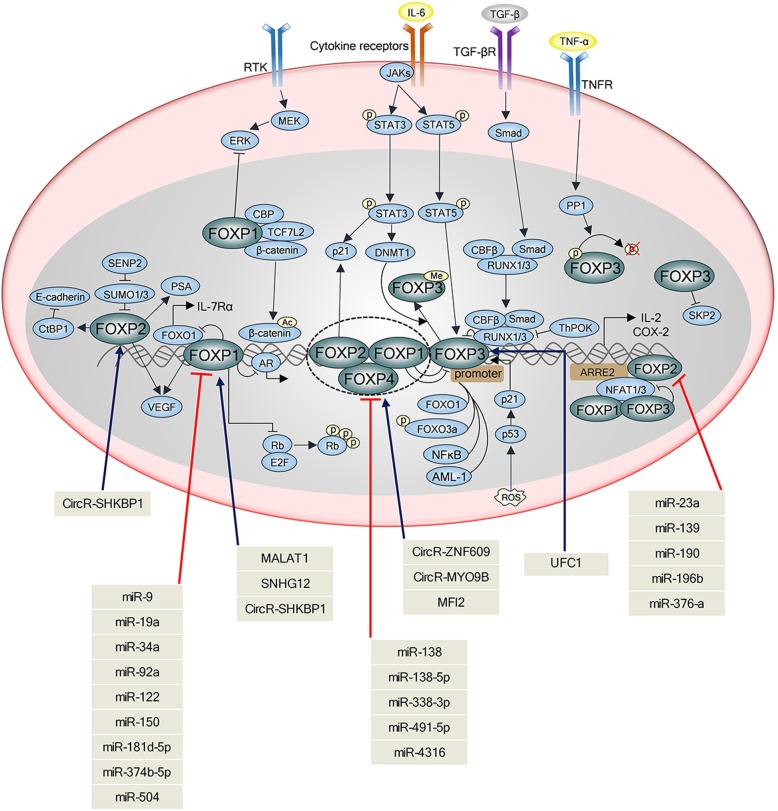Fig. 3.
Interplay between FOXP family and their related molecules targeted by noncoding RNAs. FOXP family members consist of FOXP1, FOXP2, FOXP3 and FOXP4 that communicate with other molecules. Interleukin-6 (IL-6) activates the Janus tyrosine kinase (JAK) family members (JAK1, JAK2, and TYK2), leading to the activation of transcription factors of the signal transducer and activator of transcription (STAT) family including STAT3 and STAT5. Also, IL-6 induces DNA-methyltransferase 1 (DNMT1) expression and promotes STAT3-dependent methylation of FOXP3. FOXP2 overexpression upregulates the expression of p53/ p21, a downstream effector of gp130/STAT3. Transforming growth factor-β (TGF-β) activates phosphorylation of SMAD, which forms complex with CBFβ/RUNX1/3 for maintenance of FOXP3, but ThPOK blocks RUNX [219]. TNF-α stimulates protein phosphatase 1 (PP1) for dephosphorylation of FOXP3 (S418). FOXP3 interacts with two key transcription factors such as nuclear factor of activated T cells (NFAT) and NF-κB. FOXO3a phosphorylation increases FOXP3 and FOXO1 acts as a negative regulator and FOXP1. The receptor tyrosine kinases (RTKs) activate MEK-ERK signaling axis, which is repressed by FOXP1. Among noncoding RNAs, MALAT1, SNHG12 and CircRNA SHKBP1 activate FOXP1, while miR-9, miR-19a, miR-34a, miR-92a, miR-122, miR-150, miR-181–5p, miR-374-5p and miR-504 downregulate FOXP1. CircRNA SHKBP1 increases FOXP2, while miR-23a, miR-139, miR-190, miR-196b and miR-376a suppress FOXP2. UFC1 activates FOXP3 and miR-138, miR-338-3p and miR-491–5p downregulate FOXP4, while circR-SHKBP1, CircR-MYO9B and MFI2 upregulate FOXP4

